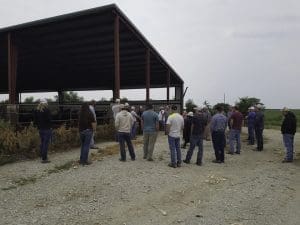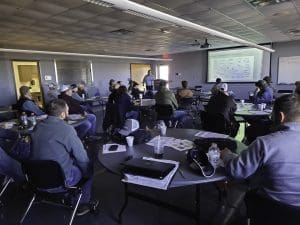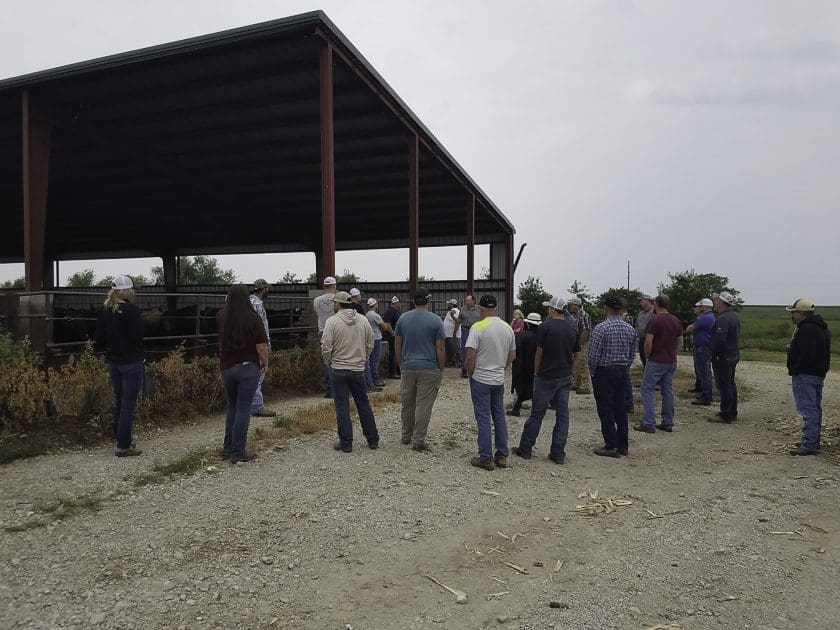By Heather Smith Thomas Contributing Editor


Many states have feedlot schools with programs to help the next generation in the fed cattle industry. For example, the Texas Cattle Feeders Association (TCFA) Feedyard Technician Program is led by TCFA in cooperation with Texas A&M AgriLife Extension Service and West Texas A&M University to provide high school juniors and seniors knowledge and skills to prepare for a potential feedlot career. The program is designed to allow teacher flexibility in utilizing existing courses and learning experiences to obtain program goals.
In North Dakota, cattle feeding classes have been ongoing since 1996; the North Dakota State University Carrington Research Extension Center provides annual two-day classes. The initial purpose was to provide information and encourage more cattle feeding in North Dakota; however, today, cattle feeding is more than finishing. It includes backgrounding, growing and breeding replacement heifers, developing rations and monitoring health transition after weaning, feeding cull cows, bulls, and the dry-lot cow herd. Subjects taught include budgets, rations, health, manure management and facilities. Animal stewardship and Beef Quality Assurance are also taught.
In Missouri, Eric Bailey, Ph.D., State Beef Nutritionist, University of Missouri (MU) Extension, helped start a feedlot school within MU Extension to help producers develop feedlots. This new program, Show Me Cattle Feeders, hosts two-day schools where producers learn about the business of feeding cattle while touring feedlots. At the first two schools in 2022, topics included why producers should feed cattle in Missouri, performance expectations, financing confinement facilities, insurance and risk management, feeding cull cows, diet formulation, bunk management, feeding technologies and feed mixing demonstrations.
“We got the idea for feedlot schools when Missouri Prime Beef Packers opened in Pleasant Hope in the winter of 2020-2021 and started taking cattle in 2021,” Bailey says. In his travels across the state, Bailey found a lot of interest from cow-calf producers about feeding their own cattle or feeding commercially and felt an educational program would be helpful. Missouri was a major cattle feeding state 50 years ago, but those producers are gone.
“We are starting from scratch,” he says. “We hope to provide support for folks already doing it and people who want to evaluate this opportunity before securing financing or building a facility. We serve as a bridge to help people make sound business decisions.” This might help people determine whether cattle feeding could work for their operation and how best to do it.
“Unfortunately, the feeding industry is facing challenges [high feed costs and transportation costs] but the schools’ value is even more important to help people make better decisions,” Bailey contends. “We want them to succeed.
“I don’t want people to think these schools only cater to large operations. We also provide tips for folks who want to put a dozen calves on a self-feeder and finish them to sell locally as freezer beef. We provide diverse offerings to fit a wide range of folks feeding cattle.”
Some want to vertically integrate and take advantage of good genetics. In the past, there have been good cattle sold through commodity markets, and someone else gets their value.
“Some producers feed their open heifers that failed to become pregnant after a timed-AI protocol,” Bailey says. “Open heifers are typically hauled to the sale barn and don’t bring what they are worth. If you can feed them and have enough to go to a packer to be butchered and add value, it’s an opportunity to make more money.”
The feeding system at the MU Thompson Farm is low input. Jim Humphrey, field specialist in livestock, MU Extension, says it’s an open lot surrounded by electric fence and utilizes a self-feeder. This is something just about anybody could implement.
“We showed that system as an example of a low-input way to feed cattle,” Humphrey explains. “Then we took the class to places with confinement facilities. One was a modified open-front, another system had hoop barns, and another had a post-frame, open-front facility. We showed several options that work.”
Tours have been very educational, with question-and-answer opportunities.
“Farmers who host the tours participate in the school and in-class sessions,” he says. “Private industry people give presentations. FCS [Farm Credit System] speakers talk about the financial side.” The speakers can show what’s involved in the real world.
Dr. John Groves, a private consulting veterinarian, talked about ways to look at animal health records.
“He has a program that shows what can happen if one calf is sick next to another pen, how to manage new arrivals, how long to keep a pen open and still filling, and when to shut it down, with guidelines on good management practices,” Humphrey says. “
Attendees enjoy the tours and sometimes it’s hard to get them back to the classroom; they’d like to spend the whole two days on those farms!”
They are eager to ask questions and learn more about running a feedlot.







